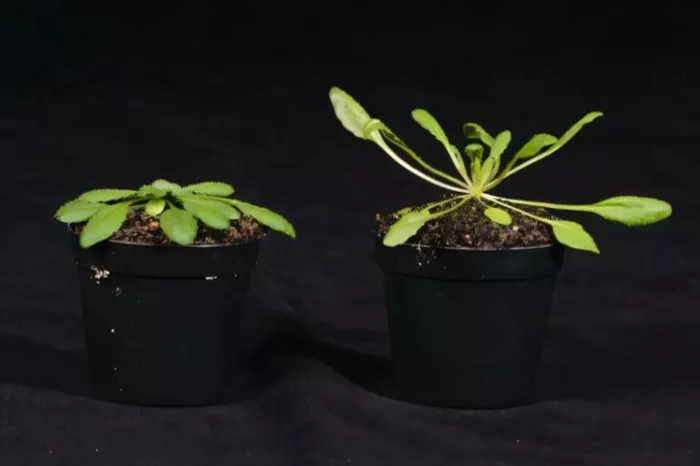New Discovery in Plant Shade Avoidance: The Role of Cytokinin Wageningen University Researchers Uncover an Unexpected Mechanism.
Plants naturally compete for essential resources like light, moisture, and nutrients, especially when densely planted. A recent study from the Molecular Biology lab at Wageningen University has unveiled a novel mechanism in this competition: the hormone cytokinin’s significant role in shade avoidance responses.
This research, published in Nature Communications, explores how plants sense crowding and respond to light changes. According to Ronald Pierik, a professor of molecular biology at the university, the competition intensifies as plants absorb red light more quickly than far-red light. In crowded conditions, this causes a decrease in the red-to-far-red light ratio, which plants detect through a pigment called phytochrome.
The Mechanism of Shade Avoidance
Phytochrome functions like a switch, toggling between active and inactive states based on the light ratio. This switch triggers a cascade of responses in plants. Pierik explains that in conditions with high far-red light, stems and petioles elongate, and leaves shift from a horizontal to a vertical position, optimizing light capture.
For instance, bean plants exhibit continuous leaf movements to better position themselves for light. The model plant, Arabidopsis, also adapts by altering its growth to outcompete neighbors. Understanding how plants interpret light information is crucial for optimizing crop planting densities, prompting research into how far this competition can extend.
Aboveground and Underground Competition
Beyond light, plants also vie for nutrients, such as nitrogen. Recognizing the interplay between aboveground and belowground competition can provide a more accurate picture of plant interactions in natural settings. This insight led postdoctoral researcher Pierre Gautrat to investigate how plants respond to far-red light when nitrogen levels are low.
Cytokinin as a Messenger
For plants to adapt to nutrient availability, they rely on communication between roots and growth points. Cytokinin, a hormone produced in roots, travels through the plant’s vascular system, signaling the availability of nitrogen. High nitrogen levels correlate with increased cytokinin production.
Interestingly, the researchers found that the shade avoidance response is inhibited under low nitrogen conditions. However, they discovered that providing additional cytokinin could enable plants to grow significantly longer in response to far-red light, even with low nitrogen. This groundbreaking finding indicates that cytokinin plays a previously unrecognized role in shade avoidance.
Revisiting Previous Conclusions
Historically, cytokinin was known to inhibit length growth. Pierik notes that past research supporting this idea involved seedlings grown in darkness. However, these responses are only evident in light, particularly in conditions with excess far-red light. This new perspective challenges previous assumptions about the hormone’s effects.
Genetic Insights
The researchers further examined how this mechanism operates at the genetic level. They identified specific proteins that reduce plant sensitivity to cytokinin, with the genes for these proteins being inhibited in far-red light conditions. This interaction reveals a complex regulatory network, where the “inhibitor” is itself inhibited, enhancing the plant’s sensitivity to cytokinin.
Implications for Crop Architecture
Understanding these processes could have significant implications for crop management and architecture. The Green Revolution highlighted the importance of developing crop varieties that allocate energy efficiently—prioritizing grain production over length growth. The insights from this study may help agronomists and growers optimize production in key crops like barley, wheat, maize, and rice.
Related topics:
- Hort Report: It’s Time to Clean Your Vegetable Plants and Plant Mums for Fall
- Sarah Rich: Exploring the Hidden Side of Plants
- Trees to Avoid Planting in Your Yard, According to an Arborist


